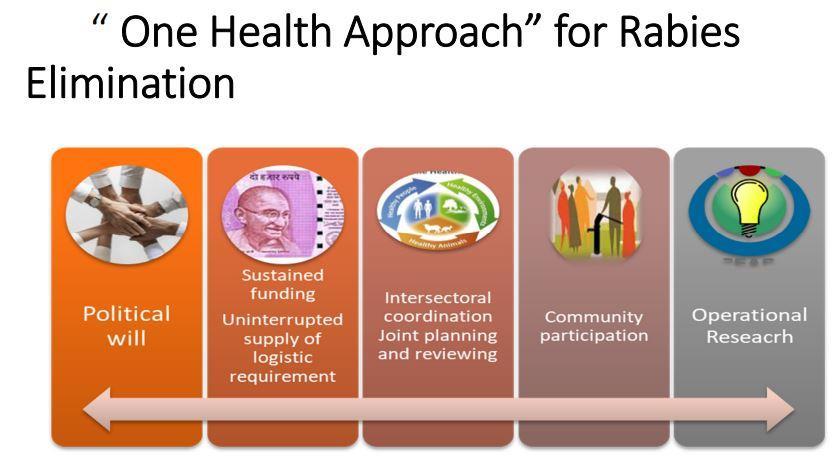CURRENT AFFAIRS
Get the most updated and recent current affair content on Padhaikaro.com
National Action Plan for dog Mediated Rabies Elimination
- IAS NEXT, Lucknow
- 30, Sep 2021

On the occasion of World Rabies Day, central Government has unveiled the ‘National Action Plan for dog Mediated Rabies Elimination’(NAPRE) by 2030.
- The National Centre for Disease Control (NCDC) has drafted the action plan in consultation with the Ministry of Fisheries, Animal Husbandry, and Dairying.
What is the Rabies?
Rabies is a fatal but preventable viral disease. It can spread to people and pets if they are bitten or scratched by a rabid animal.
- Rabies is mostly found in wild animals like bats, raccoons, skunks, and foxes, dogs and most rabies deaths in people around the world are caused by dog bites.
- The rabies virus infects the central nervous system.
- If a person does not receive the appropriate medical care after a
potential rabies exposure, the virus can cause disease in the brain, ultimately resulting in death.
- Rabies can be prevented by vaccinating pets, staying away from wildlife, and seeking medical care after potential exposures before symptoms start.
How is rabies transmitted?
Rabies virus is transmitted through direct contact (such as through broken skin or mucous membranes in the eyes, nose, or mouth) with saliva or brain/nervous system tissue from an infected animal.
Transmission:
- Rabies affects only mammals.
Rabies in India:
India has around 20,000 rabies deaths a year. Worldwide, over 59,000 people die every year from rabies, around 40% of them aged under 15.
Rabies is responsible for extensive morbidity and mortality in India.
- The disease is endemic throughout the country.
- With the exception of Andaman & Nicobar and Lakshadweep Islands, human cases of rabies are reported from all over the country. The cases occur throughout the year.
- About 96% of the mortality and morbidity is associated with dog bites.
On the occasion of World Rabies Day, central Government has unveiled the ‘National Action Plan for dog Mediated Rabies Elimination’(NAPRE) by 2030.
- The National Centre for Disease Control (NCDC) has drafted the action plan in consultation with the Ministry of Fisheries, Animal Husbandry and Dairying.
What is the Rabies?
Rabies is a fatal but preventable viral disease. It can spread to people and pets if they are bitten or scratched by a rabid animal.
- Rabies is mostly found in wild animals like bats, raccoons, skunks, and foxes, dogs and most rabies deaths in people around the world are caused by dog bites.
- The rabies virus infects the central nervous system.
- If a person does not receive the appropriate medical care after a potential rabies exposure, the virus can cause disease in the brain, ultimately resulting in death.
- Rabies can be prevented by vaccinating pets, staying away from wildlife, and seeking medical care after potential exposures before symptoms start.

How is rabies transmitted?
Rabies virus is transmitted through direct contact (such as through broken skin or mucous membranes in the eyes, nose, or mouth) with saliva or brain/nervous system tissue from an infected animal.
Transmission:
- Rabies affects only mammals.
Rabies in India:
India has around 20,000 rabies deaths a year. Worldwide, over 59,000 people die every year from rabies, around 40% of them aged under 15.
Rabies is responsible for extensive morbidity and mortality in India.
- The disease is endemic throughout the country.
- With the exception of Andaman & Nicobar and Lakshadweep Islands, human cases of rabies are reported from all over the country. The cases occur throughout the year.
- About 96% of the mortality and morbidity is associated with dog bites.